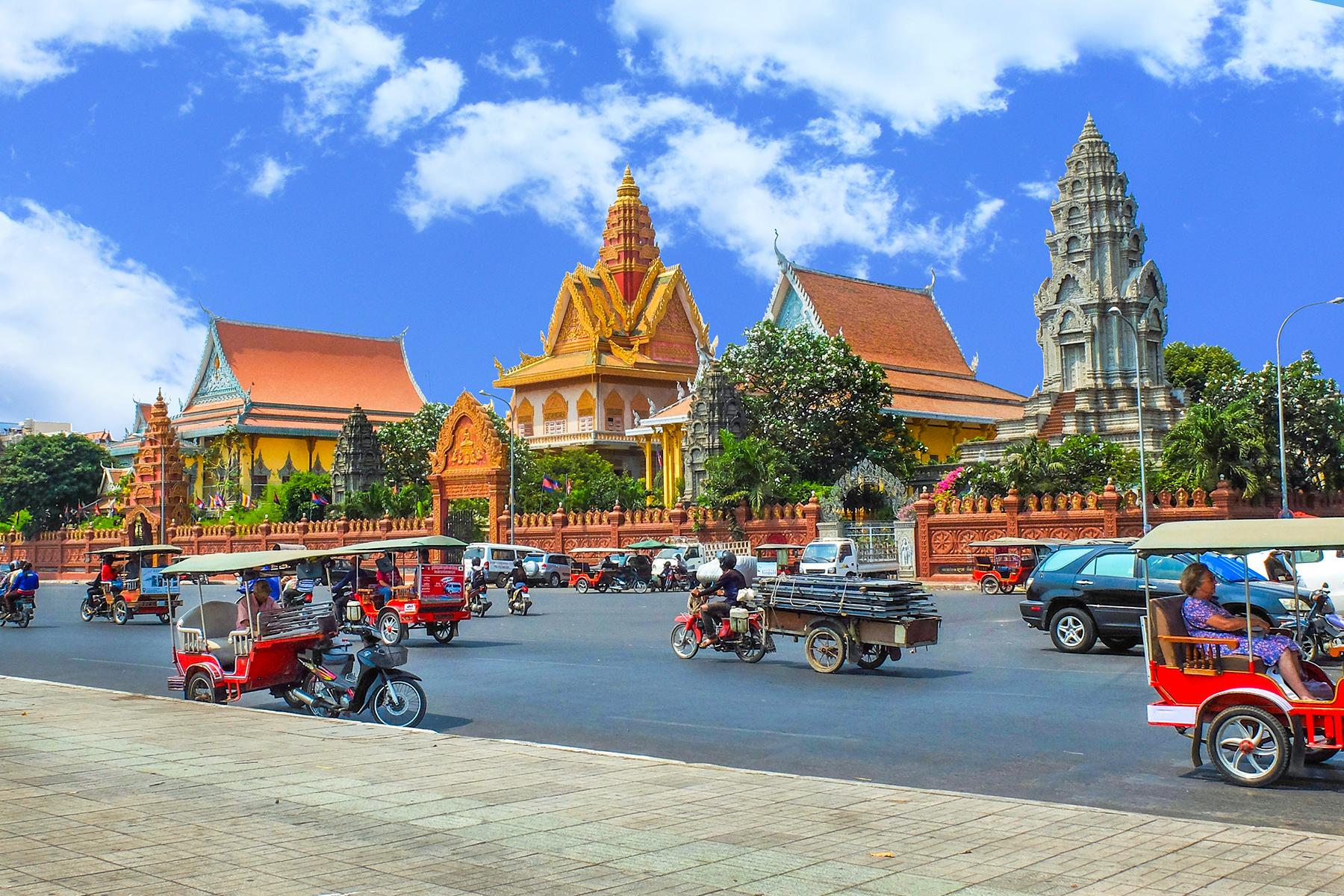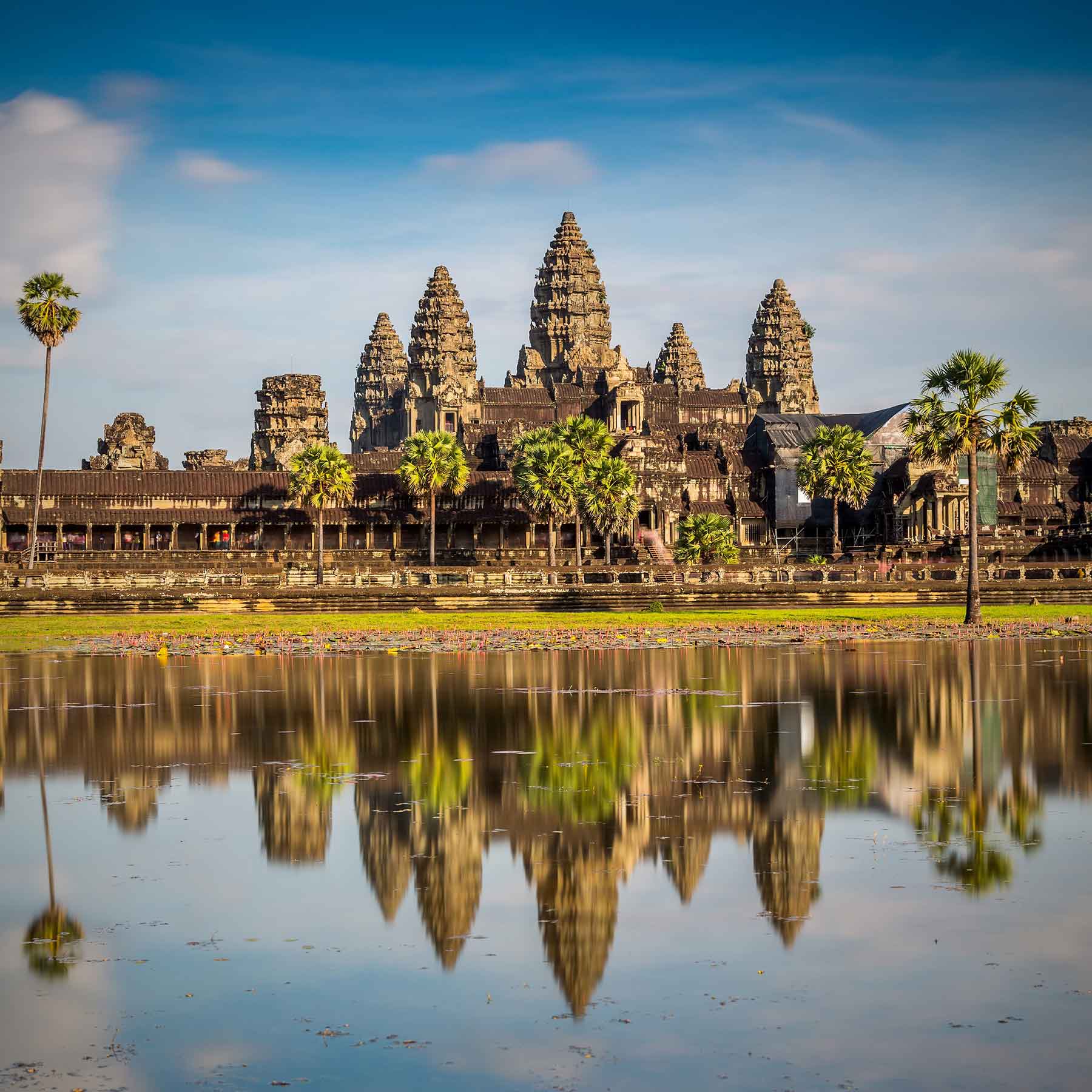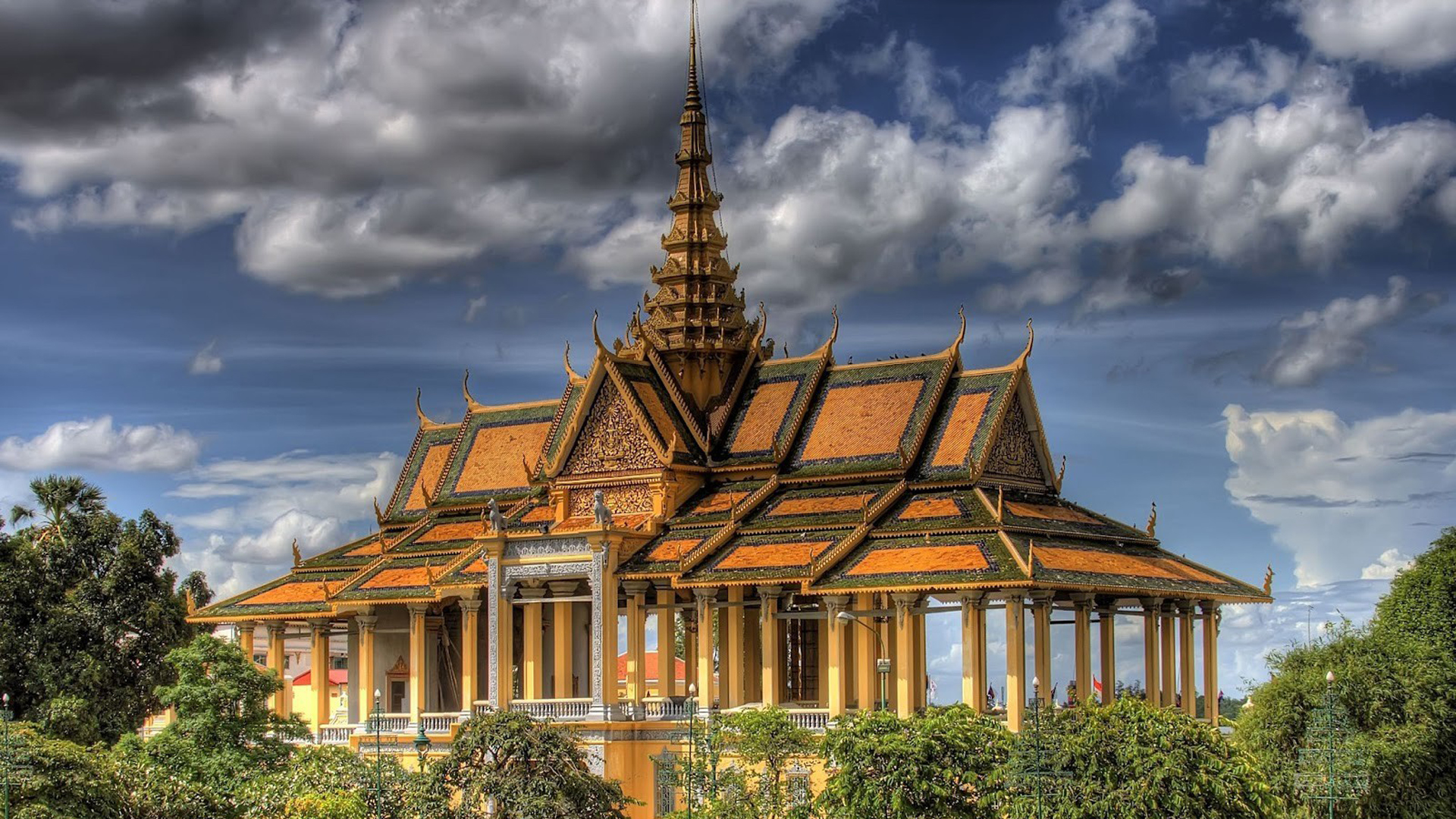Cambodia Travel - How To Experience The Best Of Cambodia
Cambodia, one of the world's most colourful countries, known as the Kingdom of Wonder, is a vibrant and culturally rich country located in Southeast Asia. From its majestic temples to its bustling markets and lush landscapes, Cambodia offers a kaleidoscope of experiences for travelers seeking adventure, history, and natural beauty.
Author:Liam JonesReviewer:Sophia HarperDec 21, 202412.7K Shares365.4K Views

Cambodia, one of the world's most colourful countries, known as the Kingdom of Wonder, is a vibrant and culturally rich country located in Southeast Asia. From its majestic temples to its bustling markets and lush landscapes, Cambodia offers a kaleidoscope of experiences for travelers seeking adventure, history, and natural beauty.
Exploring Ancient Temples
One of the highlights of any trip to Cambodia is exploring its ancient temples, with Angkor Wat being the most famous. This UNESCO World Heritage site is the largest religious monument in the world and a masterpiece of Khmer architecture. Other must-visit temples include Bayon Temple with its iconic stone faces and Ta Prohm, where ancient ruins are entwined with massive tree roots.
Immersing In Khmer Culture
Khmer culture is deeply rooted in Cambodia's history and can be experienced through its traditional dance, music, and cuisine. Visitors can attend Apsara dance performances, which showcase graceful movements and elaborate costumes inspired by Hindu mythology. Exploring local markets and sampling Khmer dishes like amok (a savory fish curry) and num banh chok (rice noodle soup) provides insight into Cambodia's culinary heritage.
Discovering Natural Wonders
Beyond its temples and cities, Cambodia boasts stunning natural landscapes waiting to be explored. The Tonle Sap Lake, the largest freshwater lake in Southeast Asia, is home to floating villages and diverse ecosystems. The Cardamom Mountains offer opportunities for trekking, wildlife spotting, and experiencing the country's biodiversity up close.
Remembering History
Cambodia's recent history, marked by the Khmer Rouge regime, is an integral part of its identity. The Killing Fields and Tuol Sleng Genocide Museum in Phnom Penh serve as sobering reminders of the atrocities committed during this dark period. Visiting these sites provides insight into Cambodia's resilience and the importance of preserving its cultural heritage.
Experiencing Modern Cambodia
While Cambodia is steeped in history, its cities offer a glimpse into modern life. Phnom Penh, the capital city, pulsates with energy, featuring vibrant street markets, bustling nightlife, and contemporary art galleries. Siem Reap, the gateway to Angkor Wat, blends ancient charm with modern amenities, offering luxury resorts, chic cafes, and boutique shops.
Embracing Hospitality
One of the most enduring impressions of Cambodia is the warmth and hospitality of its people. Cambodians, known for their friendliness and kindness, welcome visitors with open arms, making them feel at home in this enchanting land of smiles.
Prominent Sites In Cambodia
Angkor Wat
Angkor Wat stands as the pinnacle of Cambodia's attractions. This expansive temple complex, constructed in the early 12th century, holds the title of the largest religious monument globally. Visitors are captivated by its intricate bas-reliefs, towering spires, and the magnificence of its architecture. The sunrise vista over Angkor Wat is especially breathtaking and a definite must-see.
Phnom Penh
The capital city of Cambodia, Phnom Penh, boasts a rich tapestry of history and culture. Key highlights include the Royal Palace, the Silver Pagoda, and the National Museum, home to an extensive collection of Khmer artifacts. The Tuol Sleng Genocide Museum and the Killing Fields of Choeung Ek offer poignant insights into Cambodia's tragic past under the Khmer Rouge regime.
Siem Reap
Siem Reap serves as the gateway to the Angkor temples. In addition to Angkor Wat, the city presents lively nightlife, bustling markets, and cultural performances. The Angkor National Museum offers context to the historical sites, while the Old Market and Pub Street are ideal for shopping and dining.
Sihanoukville And The Islands
Sihanoukville is renowned for its beachesand acts as a departure point to nearby islands like Koh Rong and Koh Rong Samloem. These islands feature pristine beaches, crystal-clear waters, and opportunities for diving, snorkeling, and relaxation.
Battambang
Battambang is esteemed for its colonial architecture, local arts scene, and distinctive Bamboo Train. The surrounding countryside is picturesque, with rice paddies, traditional villages, and the hilltop temples of Phnom Banan and Wat Ek Phnom.
Kampot And Kep
Kampot is celebrated for its pepper plantations and picturesque riverside locale. Nearby Kep offers stunning coastal vistas and delectable seafood, particularly crab. Both towns exude a laid-back ambiance and are perfect for exploring caves, national parks, and the Bokor Hill Station.
Key Festivals In Cambodia
Khmer New Year (Choul Chnam Thmey)
Khmer New Year, observed in mid-April, ranks among the most significant holidays in Cambodia. It signifies the conclusion of the harvest season and is a time for families to reunite, visit temples, and partake in traditional games and dances.
Water Festival (Bon Om Touk)
Taking place in November, the Water Festival commemorates the reversal of the Tonle Sap River's flow. The festival's highlight is the boat races held in Phnom Penh, featuring teams from across the country. The event also includes fireworks, parades, and concerts.
Pchum Ben
This 15-day festival in September or October honors the spirits of ancestors. Cambodians visit pagodas to make offerings and show respect. It is a significant religious and cultural event emphasizing family and remembrance.
Royal Ploughing Ceremony (Bonn Chroat Preah Nongkoal)
This ancient ceremony, held in May, symbolizes the start of the rice-growing season. It involves symbolic plowing and predictions about the upcoming harvest, overseen by the King or a high-ranking official.
Ideal Time To Visit Angkor
The optimal period to explore Angkor is during the dry season, running from November to April. During this timeframe, the weather tends to be cooler and drier, enhancing the comfort of exploring the vast temple complex. The peak tourist months are December and January when the weather is most pleasant.
Visiting during the shoulder months of November and February to April can also be rewarding, as the weather remains pleasant while the crowds are fewer. The wet season, spanning from May to October, experiences fewer tourists and lush green landscapes, though visitors should be prepared for higher humidity and occasional heavy rainfall.
Colourful Countries - Cambodia - FAQs
What Is Cambodia Known For?
Cambodia is renowned for its ancient temples, particularly the iconic Angkor Wat, which is the largest religious monument in the world. The country is also known for its rich cultural heritage, including traditional dance, music, and cuisine.
Is Cambodia Safe For Tourists?
Yes, Cambodia is generally safe for tourists, but like any destination, travelers should take common-sense precautions. It's advisable to be cautious of petty theft, particularly in crowded areas, and to stay informed about any local safety concerns.
What Is The Currency Used In Cambodia?
The official currency of Cambodia is the Cambodian riel (KHR), but US dollars are widely accepted, especially in tourist areas. It's recommended to carry a mix of riel and dollars when traveling in Cambodia.
What Language Is Spoken In Cambodia?
The official language of Cambodia is Khmer, but English is widely spoken, especially in tourist areas, hotels, and restaurants. Learning a few basic Khmer phrases can enhance your travelexperience and interactions with locals.
When Is The Best Time To Visit Cambodia?
The best time to visit Cambodia is during the dry season, which runs from November to April. During this time, the weather is typically warm and sunny, making it ideal for exploring temples and outdoor activities. The wet season, from May to October, brings heavy rainfall and humidity, but it can also be a great time to experience Cambodia's lush landscapes and fewer crowds.
What Are Some Must-visit Destinations In Cambodia?
In addition to Angkor Wat, other must-visit destinationsin Cambodia include the bustling capital city of Phnom Penh, the picturesque riverside town of Kampot, and the idyllic beaches of Sihanoukville. The rural province of Battambang and the eco-tourism hub of Mondulkiri also offer unique cultural and natural experiences.
What Is Cambodian Cuisine Like?
Cambodian cuisine is known for its bold flavors, fresh ingredients, and aromatic spices. Some popular dishes include fish amok (a coconut milk-based curry), beef lok lak (stir-fried beef with a tangy sauce), and kuy teav (a noodle soup often served for breakfast). Street food stalls and local markets offer a wide variety of affordable and delicious options for adventurous eaters.
Conclusion
Cambodia captivates travelers with its captivating blend of ancient traditions, natural beauty, and warm hospitality. Whether exploring ancient temples, savoring Khmer cuisine, or discovering its rich history, Cambodia promises an unforgettable journey filled with vibrant colors and unforgettable experiences.
Linkhouse

Liam Jones
Author
Liam Jones has made it his mission to prove that adventure doesn’t need a hefty budget. Having traveled to over 40 countries, he specializes in finding affordable ways to experience the world, from the best street food in Bangkok to hidden gems in Lisbon.
Liam’s travel tips have reached thousands of readers, empowering them to see the world on a shoestring budget without sacrificing quality. With a deep passion for local cultures, he continues to share his travel hacks, ensuring adventure remains accessible to all.

Sophia Harper
Reviewer
Sophia Harper’s photography acts as a portal to the soul of the places she visits. Drawn to South America’s landscapes and cultures, she has spent years capturing everything from the majesty of ancient ruins to the vibrancy of urban streets.
Sophia’s work isn’t just about documenting moments; it’s about evoking the emotions and stories behind them. A dedicated photographer, she has worked with local communities across South America to capture their rich cultural narratives through her lens.
Latest Articles
Popular Articles

